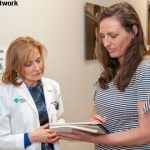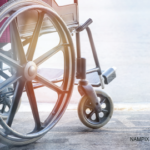- An increase in patient empowerment (e.g., patients knew when to come into the clinic for a flare, when to get vaccinations, when to stop therapies to prevent new or worsening infections, when to access other specialists and how to self-manage, including pain management strategies);
- An increase in collaborative care; and
- An increase in early diagnosis of rheumatic diseases, in part by creating an accelerated pathway to complete the necessary diagnostic evaluation. We were able to achieve this by having a laboratory on site that could test for rare diseases (e.g., Pompe disease) and piloting innovative bedside techniques for earlier diagnosis, such as handheld ultrasound devices for synovitis.
These advances may appear simple, but they definitely are not simplistic. We pushed the boundaries of our understanding of rheumatic diseases every day, and this allowed for a revolution in care. It allowed patients to return to functional capacity in their communities sooner by reducing the time it took them to access care and the need for frequent clinical visits, and by providing them with self-management skills and options.
Patients are often frustrated when attempting to describe pain. For example, a patient from another country or another culture may have an exasperating experience when attempting to describe symptoms to a new care provider. When we make that patient an equal member of a transdisciplinary team, however, that patient can be an integral part of shared decision making. Educate that patient about the underlying symptomology of their condition, and they become empowered to select their care and desired outcomes. The patient can make choices that can incrementally help them over time and can be followed by the team for ongoing assessment of the success of the strategic approach.
When a patient is educated about the source of pain and functional limitations, they can be their own best advocate for the best way to navigate a complicated care system. This allows for an earlier and more accurate diagnosis, and for a more targeted continuation of care.
In an integrated model, coordination can occur, and the patient can more easily determine who is an appropriate care provider for a particular aspect of their disease. This results in decreased costs, stress, time and personal resources, while creating efficient delivery of care.
Now that I have transitioned from an academic practice model to an integrated care model, when I turn out the lights as I leave the center to go home, I know that I have not set limits on my patients’ potential for improvement. With their input, we have unraveled a Gordian knot, which I believe will lead them to a better destiny and a more enriched life.


